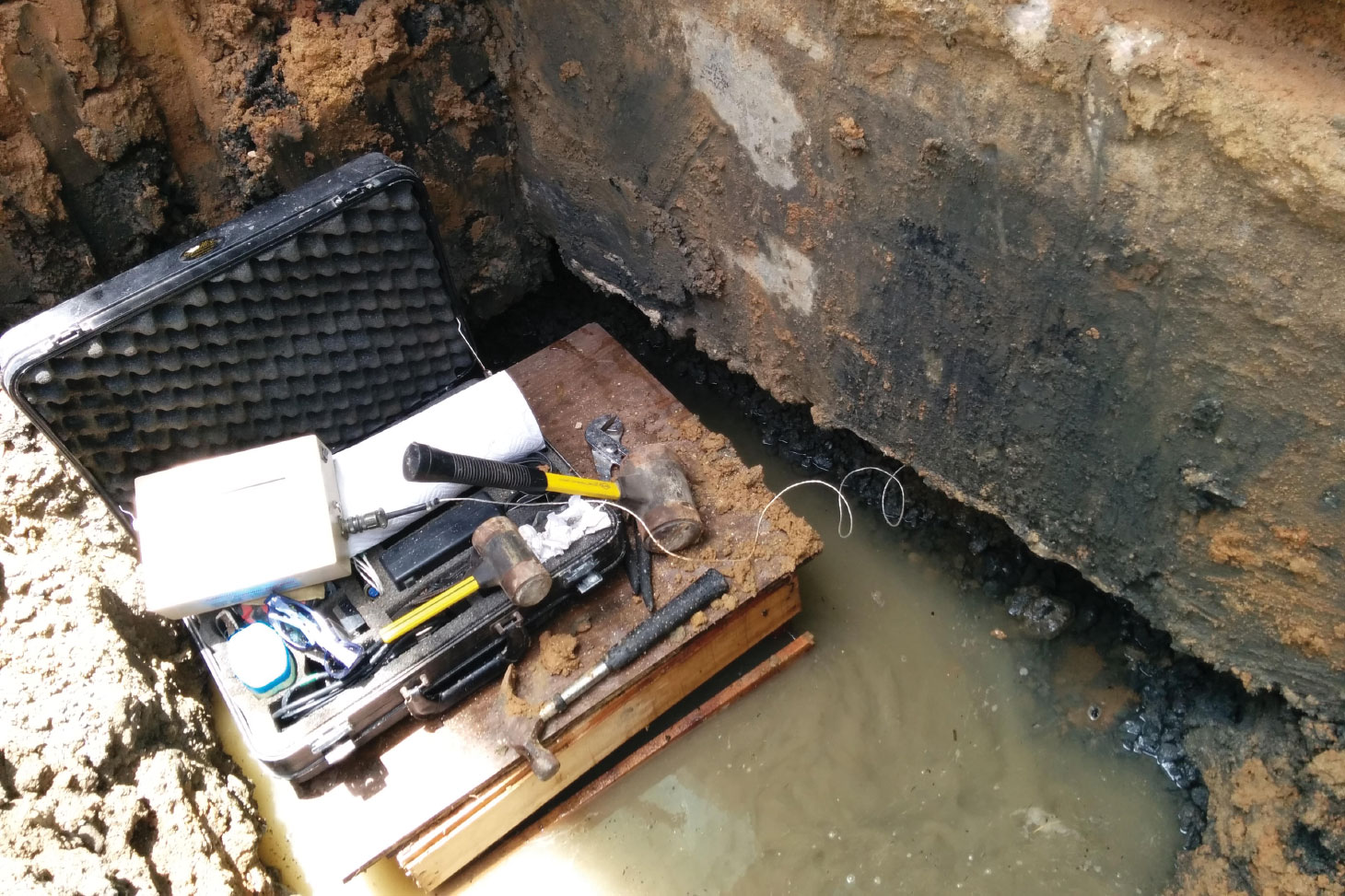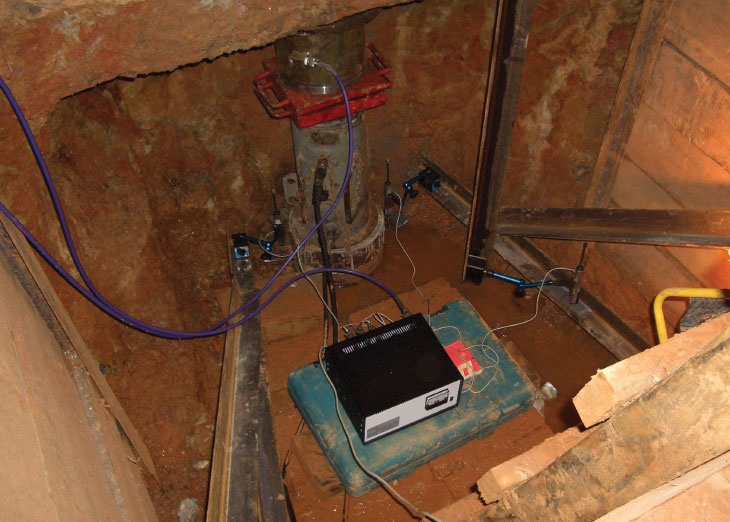
Whether it is beneath a towering skyscraper or a massive infrastructure project, deep foundations are there to provide the critical support that ensures stability throughout the years. But because these deep foundations – by their nature – are hidden from view, it is not possible for engineers to inspect them, at least not easily.
As the demand for stronger, more resilient foundations continues to grow, non-destructive testing (NDT) has become the diagnostic tool of choice for modern engineering. Like slipping on a pair of X-ray glasses, NDT uses cutting-edge methods to peer into the ground when the foundation is built and, in many cases, under existing structures, and without disturbing these structures. This is the optimal way to uncover hidden flaws, optimize designs and ensure safety.
Founded in 2020 and based in Ottawa, Ont., Scientific Applied Concepts Ltd. (SACL) is a leading geotechnical and foundation engineering company that prides itself for having expertise and professionally trained personnel offering quick accurate report turnaround, and the capacity to be available on site anywhere in the world within a short notice.

The company was born from the ashes of a previous company started by SACL president and principal engineer, Hicham Salem, Ph.D., P.Eng., which was heavily involved in the Alberta oil sands projects. But after the sudden drop in oil prices, the 2016 Fort McMurray wildfire, and the COVID-19 pandemic, Salem decided to change gears.
“Along with my right-hand engineer, Mudasser Noor, we braved the pandemic to start up SACL, which capitalizes on our experience in the niche market we had serviced for many years,” said Salem. “What helped us succeed – besides being good at what we do – was the fact that infrastructure projects were considered essential work and that kept us going through the pandemic shutdown.”
Tools of the trade
The presence of voids or intrusions of soft soil material into a concrete pile carrying a structure is considered a deviation that impacts performance for the pile’s intended use. The consequences may vary depending on the location and extent of the defect, as well as the amount of load the pile is designed to carry, but NDT enables engineers to head off failures before they happen. The deep foundation NDT that SACL specializes in can be divided in two main categories: integrity and capacity.
In terms of integrity, the company most commonly uses two sonic methods and one thermal. The Pulse-Echo method consists of generating a stress wave by tapping on the pile head with a small hand-held hammer and using a sensitive geophone to record the reflections coming back to the pile head. Cross-hole sonic logging also uses ultrasonic waves propagating through a concrete pile; however, the waves are in the transverse direction between a transmitter probe and a receiver probe lowered in pairs of tubes embedded in the concrete. This is equivalent to scanning the pile along a vertical section.


Thermal integrity testing consists of embedding several wires along the pile with temperature sensors mounted on each line at 300-millimetre spacing. The sensors then measure the temperature emitted by the hydrating concrete and convert it to an integrity profile. When it comes to capacity, SACL performs traditional static, bidirectional static, and dynamic testing (PDA), which is mostly used for driven piles.
“In terms of capacity of a non-defective pile, it is important to verify the capability of a pile to carry the assigned loads – as designed by the engineer – using common parameters of pile-soil interaction at a specific site location,” said Salem. “A lack of testing may result in underestimating the pile performance and potentially lead to unnecessary high cost of foundations or to overestimate the pile performance, which may also lead to high financial impact – or worse – if piles should happen to fail while the structure is in use.”
An evolving technology
The various NDT methodologies have evolved over time, with some being relatively new, such as the thermal integrity test, which was a result of a research project at the University of Florida and was developed by Pile Dynamics Inc. into a commercial testing system. Older tests, such as the PDA, have changed significantly over they years – from having to haul equipment that can fill up the box of a pickup truck in the `80s to carrying a handheld laptop-like device today.
“In my opinion, however, the most important advancement is linked to advancements in communication technology, which allows us today to connect to the equipment over the internet and operate it from the comfort of the office without having to fly across the country,” said Salem. “This releases contractors from the dependence on scheduling testing professionals in advance to get to the site and be at the mercy of transportation delays and availability. At SACL, we can run most of our foundation tests remotely and this is a tremendous advantage.”

SACL has made it a priority to follow the advancements in the NDT space and constantly trades up equipment when new capabilities become available. The company also strives to stay informed on new case studies published in conferences or journals, and where certification is available.
“We travel, we study and we take the tests and have the highest certification in PDA testing given by the Pile Driving Contractors Association,” said Salem. “It also helps us that we work across Canada, in the United States, Puerto Rico and beyond, so our experience is not limited to local conditions and methods. One more important thing also sets us apart; our close collaboration with my ex-professor and mentor, Bengt H. Fellenius, Dr.Tec., P.Eng., who is widely recognized as a world leader in deep foundations technology.”
Bringing NDT to the jobsite
One of the main challenges with using NDT within the general construction community is a lack of understanding about the different test methods and their principles. What’s more, as the tests become more and more embedded in recent specifications and plans, contractors and engineers are falling behind as they can’t keep up with technical advancements. However, there has also been a recent push by the various engineering associations across North America to require a certain level of continuing education with a minimum number of hours spread over various categories.
SACL is typically brought onto the project when NDT is part of the bid process, however, the company also recommends testing to guide the contractor in reducing installation problems and resolving issues on site. When testing is specified, the company receives calls from contractors to assess and quote the required testing and then – once the project is underway – meet with the contractor’s crew so everyone is fully aware of the test requirements in terms of timing, preparation and access.
In many cases, SACL will then stay on to train some of the contractor’s personnel to ensure they can prepare the foundations for testing, handle the test equipment and collaborate with its engineers to access remotely and perform the testing.
“After this training is complete, the new technicians can shadow our experienced technicians and engineers on several sites until they gain adequate experience to be on their own, where we then oversee their work remotely until we are confident that they can handle the usual challenges with different foundation types and soil conditions,” said Salem. “And we are always a phone call away to consult and assist remotely.”